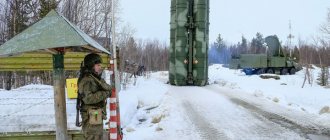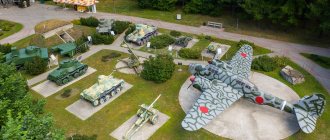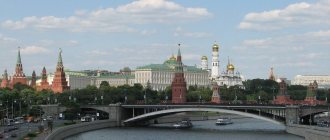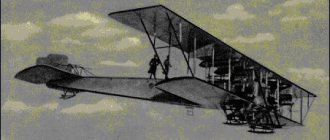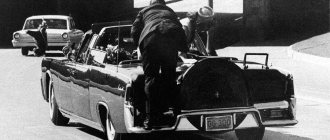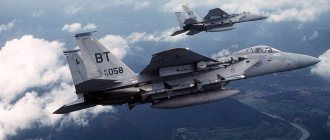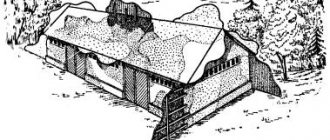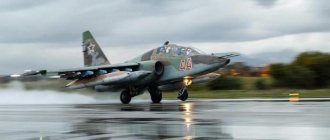The other day, Vladimir Putin made a statement regarding the need for more intensive development of military transport aviation (MTA). Let us quote the president in full: “For our country with its vast territory, the largest territory in the world, let me remind you that this is of particular importance so that our army is compact, as we always say, but effective. This is also important for conducting successful landing operations... Our Armed Forces need to have a sufficient number of military transport aircraft...".
For a variety of reasons, this is a truly strategically important issue worthy of the close attention of the head of state.
The recent past and the tasks of the near future
The USSR had the largest airborne forces in the world, and these troops had (and still have) a unique appearance stemming from their unique missions at that time. The Airborne Forces, with their unprecedented level of mechanization, gave Soviet troops unique capabilities. Even at the final stage of the breakthrough of NATO’s defenses in Europe, the VTA could have landed huge mechanized military formations from the air behind enemy lines, which would have immediately begun to develop the success of the offensive. Soviet tanks would still be crushing the last enemy reserves, and the rear of these reserves would already be demolished by a massive offensive of light mechanized units parachuted onto the enemy with all the equipment - the Airborne Forces.
For comparison: the United States, when creating its MTA, always kept in mind the need to ensure the emergency transfer of troops to another continent. Almost all US Air Force military transport aircraft developed since the second half of the 1950s have an in-flight refueling system, which is necessary when transporting troops over long ranges. In the USSR, BTA aircraft were not equipped with in-flight refueling systems - there was no need. Their range made it possible to use these vehicles within the Eurasian continent, and their main task was parachute landings in Europe.
Much has changed since the collapse of the USSR. There is no longer a Warsaw Pact and we have neither the need nor the ability to move tanks to the English Channel. There is no need to develop the success of the offensive with the help of mechanized airborne formations. Does all this mean that airborne landings by parachute are irrelevant?
No. We have a lot of regions that are very far from areas with significant population density. Neither the Kuril Islands nor Sakhalin are able to place garrisons capable of delaying a hypothetical invasion from Japan - purely due to geography, the Japanese end up there faster and in greater numbers. In such conditions, only the Airborne Forces have the opportunity to be on the enemy’s path faster than he can occupy all the territories of interest to him and have time to organize defense.
Neither the fleet nor the marines are suitable here - there are only three landing ships in the entire Pacific Fleet, and only one cruiser, four BODs, one old destroyer and two corvettes can be thrown into the fight for supremacy at sea (the third, Aldar Tsydenzhapov, was never used anti-aircraft missile system, its combat effectiveness is in question). For attack missions there are several missile boats and small missile ships. There are several submarines that are seriously inferior in capabilities to Japanese ones.
In such conditions, in order to quickly stop aggression and not lead to the use of nuclear weapons, which will have a lot of unfavorable political consequences, Russia will have exactly two tools. The Air Force, which will have to cope with Japanese aviation, and the Airborne Forces, which, in the case of Sakhalin, will have to stop Japanese troops there or slow down their advance until units of the Ground Forces with heavy weapons are transferred there, and in the case of the Kuril Islands, to drive the Japanese out of the islands as quickly as possible . Do we have enough strength for all this? If you train and prepare to act in such difficult conditions, then yes, it may be enough. And here the Russian Armed Forces will need a lot of military transport aircraft - and not only for landing troops, but also for supplying them.
Regions such as Chukotka, Kamchatka, and the Northern Kuril Islands are in an even worse situation. They are even further from our bases, airfields and ports. At the same time, the enemy (for example, the United States) can safely keep landing forces of thousands of people at sea at a distance of 3-4 hours. As in the case of Japan, if the enemy decides to make the first move, it will be impossible to forestall him. We also have no opportunity to organize a dense defense in these deserted spaces. There is only the opportunity to counterattack faster than the enemy “dug in” - and again there is no alternative to the Air Force and Airborne Forces.
Thus, airborne capabilities are critical and purely for defensive purposes.
The coming destabilization of Afghanistan and the possibility of a surge in terrorism in Central Asia may also necessitate a military response on our part, and one so fast that it simply won’t be possible to calmly unload onto airfields. There are other countries where our troops may have to appear faster than they will be expected there, and not where they will be expected.
The problem is that BTA's capabilities are now not at all what they should be to act in the manner described above.
Hazy present
Like the Armed Forces as a whole, the VTA experienced the severe consequences of the collapse of the USSR. For many years after this collapse, we simply had nowhere to get new aircraft - the restart of production of the Il-76 required its re-development. Currently, our country is capable of building three Il-76s per year.
In other classes of transport aircraft, things are even worse - the Il-112V has not yet been brought to readiness for mass production, and the An-12's equivalent in terms of carrying capacity still exists only in the form of drawings and mock-ups. We also cannot produce heavy An-124 aircraft; the promising heavy aircraft still exists only on paper.
And in this difficult situation, BTA received a “kick in the gut.” We are talking about supplying the Russian group in Syria.
By the beginning of the Syrian operation, the Navy did not have any transports for delivering cargo, and landing ships were used. Moreover, the fleet transported military equipment to Syria on everything that could float on the water - from kill ships to floating workshops. This was not enough, we had to buy up dilapidated ships in Turkey and include them in the auxiliary fleet. This was still not enough, and then the command of the Armed Forces threw military transport aircraft into battle.
BTA aircraft operated flights to Khmeimim every day. One Il-76 aircraft could not transport more than a couple of dozen tons over the distance over which it had to fly, but a dozen such aircraft per week already meant more than two hundred tons of cargo. Sometimes these were Ruslans, which brought much more cargo at a time, for example, the S-400 air defense system guarding the Khmeimim airbase was delivered by air.
In other words, BTA completed the task, but...
As a result, on those Il-76s that are equipped with old D-30KP engines, engine wear is 50 percent. Remotorization on the PS-90A is actually not taking place. The D-18T engines of the Ruslans are seriously worn out; today it is unlikely that the VKS will be able to lift even eight such aircraft into the air at the same time. And remotorization of these aircraft is also necessary, but there are simply no new PD-35s that could replace the D-18T. Of course, this does not mean that our planes are confined to the ground, BTA ensured the delivery of troops to Karabakh, its planes regularly operate flights of great military importance. But the statistics are depressing. The BTA's resources have been exhausted in the Syrian war - this is a sad fact.
But these are not all the problems facing the Russian BTA today. To understand, it is necessary to recall the events of more than twenty years ago.
Expand opportunities
On June 12, 1999, at 07.00 local time, a detachment of Russian airborne troops under the command of Major General Vasily Rybkin entered the territory of the Slatina airport in the city of Pristina, the capital of the Serbian region of Kosovo. By this time, a GRU special forces detachment under the command of Major Yunus-Bek Yevkurov was on the airport territory, and the paratroopers occupied the airfield quickly and without incident.
It was assumed that reinforcements would be immediately airlifted to help the detachment, large enough so that Russia could demand its sector in Kosovo. However, the countries surrounding Yugoslavia refused to allow Russian planes with paratroopers to pass through their airspace. In the end, Russia did not receive any sector of its own. In general, Russia’s influence in the Balkans at that moment was reduced to zero.
What could reduce the severity of the issue? Availability of in-flight refueling systems and a sufficient number of tanker aircraft with a long flight range on military transport aircraft of the Russian Armed Forces. A flight of a group of aircraft with several refueling rounds around Gibraltar could in this case be completed in 15-20 hours. In conditions where NATO countries did not have the political determination to attack Russian forces, no one would touch the planes, especially if the necessary measures were taken to ensure surprise. The outcome of the Yugoslav war would have been different for our country, and the current political situation in the region would also have been different, more beneficial for Russia.
The focus on landings of operational and tactical significance behind the front line, which was the basis of the concept of building a military aviation in the USSR, played a cruel joke on our country in the post-Soviet period. When transport aircraft were needed to solve a strategic mission, they turned out to be technically unable to accomplish it. We need to make sure that this problem never faces Russia again. Moreover, without these systems, hypothetical operations to liberate Anadyr, Pevek, Kotelny Island and other remote areas of our country are also in question.
Il-76 is an excellent aircraft. Its new modifications even have a normal toilet, which solves the main problem of this machine, with which many generations of Soviet and Russian military personnel suffered. Yes, today the BTA is in crisis, including with the production of new aircraft of different classes, but the Il-76 in its new modification has already been mastered, is already in production, it is good and can solve 90% of any conceivable tasks of the BTA. The construction of the A-50 long-range radar detection aircraft in its airframe with an in-flight refueling system shows that a basic transport aircraft can have such a system.
Our transport aircraft must have an in-flight refueling system.
There is another solution, the fastest of all possible - fuel tanks and UPAZ units installed in the cargo cabin of a transport aircraft, turning any military transport aircraft into a tanker. The presence of such kits can solve the problem associated with the lack of tankers. Moreover, combat aircraft without in-flight refueling systems will be able to refuel other VKS aircraft.
Otherwise, the president said everything - we need more military transport aircraft. It is unlikely that Russia in its current state will quickly solve the problem of replacing the An-124, and the Il-112V will most likely take several more years to be perfected. But it is possible to sharply intensify the production of the Il-76 now - and make this machine one that would perform all the tasks necessary for the BTA.
The expert explained the appearance of Russian military equipment in the DPR
According to the Main Intelligence Directorate of the Ministry of Defense of Ukraine, since the beginning of January, several tanks, self-propelled artillery units, and ammunition have been transported from Russian territory to the unrecognized republics. Military equipment was delivered by rail and road transport.
Ukrainian President Vladimir Zelensky, in an interview with The Washington Post, suggested that Moscow plans to intensify the escalation of the conflict in territories where “people historically live” with family ties to Russia. For example, under the guise of protecting the Russian-speaking population, Moscow can take control of Kharkov.
Earlier, a representative of the People's Militia of the self-proclaimed Donetsk People's Republic, Eduard Basurin, made similar claims to the Ukrainian side. According to him, Kyiv transferred eight Smerch and Uragan multiple launch rocket systems to the Donbass.
Political scientist Sergei Markov, in a conversation with MK, assessed the likelihood of large-scale hostilities:
— Don’t forget that there is a psychological war going on, and both sides can either outright lie or tell half-truths. You can't trust anyone. But, if this information is true, then there may be several options for the development of events.
First, if Russia recognizes the self-proclaimed Donetsk and Lugansk people's republics, then troops on the border are needed to prevent the Kiev regime from giving the order to go on the offensive.
The second option: the Kyiv authorities will give the order to the Ukrainian Armed Forces to go on the offensive. Then Russia will respond to these actions, and this time it will not stop only at defense.
— Do you think Russia can recognize the DPR and LPR as independent states?
— The probability of this, in my opinion, is 85%.
— What sanctions against Russia may follow from this decision?
— There will be no large sanctions. Biden has already stated that if there is a small invasion, there will be no response from them. And if it’s big, then there will be an answer. That is, it can be interpreted this way: Donbass - take it, but you cannot enter Kharkov, Odessa, the Black Sea region.
— Why do you think that Russia will recognize the self-proclaimed republics after eight years?
“Russia feels like its back is against the wall. There were many agreements, and it always turned out to be a deception on the part of the Ukrainian side. I think Moscow is counting on Biden not to act like Trump, who was ready to take radical measures. In addition, now is the moment that Russia has an advantage over the United States in the field of nuclear missile weapons.
